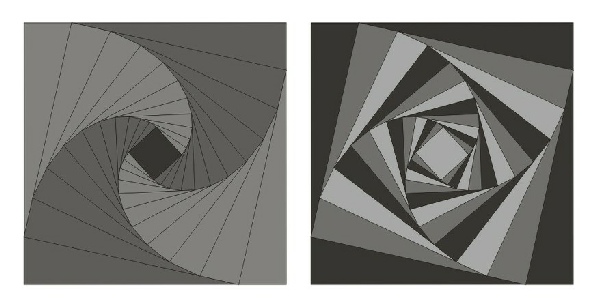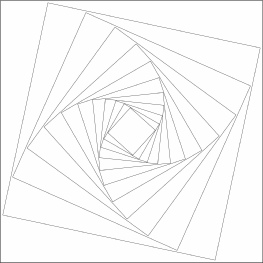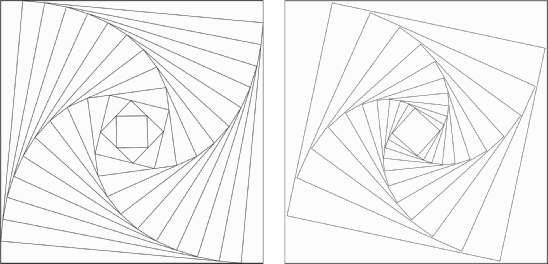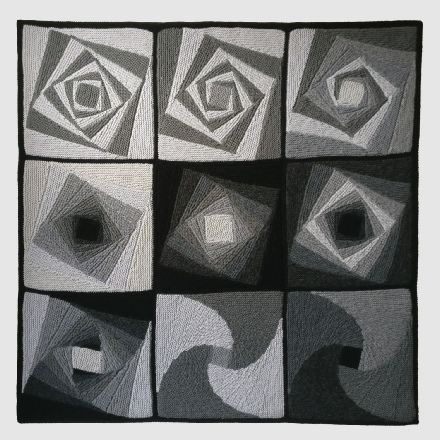©Woolly Thoughts 2018 Contact Us
This extra information was written, in April 2020, as an entry in The Big Lock-

Are these the same?
Look at them with the eye of an artist and you will almost certainly say ‘No’. As a mathematician you might say ‘Yes’, or, at least ‘Maybe’.
You will definitely recognise this – or will you?
Most will instantly say ‘curves of pursuit’ – but is that right?
Technically, a pursuit curve is the path followed by the chaser in pursuit of the chased. This might be an animal pursuing its prey, one ship trying to catch another, or any other kind of chase. It is a single path. We usually see curves of pursuit where there are several chasers with each one pursuing the one in front and making pretty patterns. They don’t have to be in squares. Three equally-

Right now we are only concerned with four chasers starting at the corners of a square field – but the squares you see above are not accurate cyclic curves. We have used artistic licence in our design. What you see are squares always rotated through the same angle. This is not what happens in a genuine curve of pursuit.
Assuming that all chasers are moving continuously at the same speed they will always cover the same distance in the same amount of time. The distance they move forwards will always be the same. This is not what happens in our design. The difference is not obvious on the first few squares but as you move further in you can see that the short side of the triangles remains the same throughout the ‘real curve’ but it is the angle that stays the same in the ‘artistic curve’.

The ‘real curve’ would be extremely difficult to replicate in knitting, as a separate set of instructions would be needed for each set of triangles. The knitted version uses the same shaping technique throughout, which results in triangles with equal angles, instead of a matching side. Our chasers are changing their speed, but are always chasing one another. You have probably noticed that the squares in our version don’t quite touch the edges of the previous square. We know that lines in a drawing, theoretically, have no thickness. Woolly things have quite thick joins.
The knitting starts with the centre square and each new square is four triangles added to the sides of the previous square. Having established that the rest should be straightforward. Not so.
The story of the knitting pattern goes back a long way. Briefly, it was first published in 1997 and hundreds of people made blankets. After a few years we started to get complaints from people who thought they had received the wrong pattern. They wanted the one with curves, not squares. We spent so much time explaining that what they saw depended on the colouring they used, we had to find a solution. Colours often cause problems because people feel the need to use exactly what was used in the original. The solution had to be in shades of grey. We made nine different versions so everyone could find what they wanted.
